Your Guide to a Perfect Two Weeks in Japan
- The Marble Team
- Dec 3, 2019
- 5 min read
Updated: Dec 5, 2019
Written By Corey D’Anna
Visiting Japan is on the bucket list of many college students, and why not? With its rich traditions and culture, fun and youthful nightlife, and beautiful historic locations, there is something for everyone to enjoy in Japan. I’m going to show you how to have a dream vacation in Japan on a college budget.
In 2016, I planned a trip to Japan for six people, including myself. We traveled in the summer and stayed under a budget of about $2,500 each. An important aspect for us was to have a flexible itinerary and so we built in some day trips that could be shortened or even skipped to save on money. One of these optional trips was to Koyasan, a quaint pilgrimage town that boasts traditional Buddhist temples run by monks, which allows tourists to stay in them for a one-of-a-kind experience. A few more day trips allowed fun, yet flexible options for our trip.
To stay within budget, I began planning a year in advance from our travel date. Each person in my group saved about $200 a month for a year, where we made three major payments before we left. As college students, we found that traveling during the summertime was ideal because it fit all of our schedules. There is a downside to traveling at this time; it is when the monsoon season is in full swing in Japan, and so the weather tends to be rainy often. However, the upside to traveling in summer is a significant lack of gaijin or foreign tourists. This meant that we paid a bit more for our plane tickets, but we were pretty much alone at all the best tourist destinations—it felt a bit like going to Disneyland on a rainy school-day. For us, traveling in the summer was a must because we were all students and only had that time to go. This worked out because tourist sites, hostels, and trains were all pretty empty.
Japan has something to offer travelers all year-round. Whether you’re interested in seeing the spring sakura trees blooming, the summer matsuri (festivals), the vivid fall leaves, or the steamy winter onsen (bathhouses), Japan is truly a world of four seasons. Picking the best time to go can depend on different factors —what you would like to see, where you would like to go, or if you would like to avoid crowds—but for the budget-conscious college student, finding time to travel around a school schedule can sometimes be limiting. Overall, in order to travel successfully, you must decide what you want out of your trip and work around that first.
The first big purchase we made was the plane tickets. Remember: plane fares can change regularly due to many wavering costs. I watched the prices of my plane ticket fluctuate for about two months before finally catching a great deal. A fantastic tool for the money-savvy traveler is the phone app called Hopper, which keeps track of the places of interest and lets you know when prices are at their best. Once you have picked a cheap time to fly, CheapOair is the way to go when finding the cheapest tickets on the market.
The next big purchase was the Japan Rail Pass (JR Pass). It grants you access on most trains in Tokyo, Osaka, and Hiroshima, and also allows you to travel long distances on the shinkansen, or bullet train. The JR Pass is an absolute must when taking on such a long-distance trip because it saves you tons of money. Each trip on the shinkansen can be around $200 or more. We used it three times, so we would have had to pay over $600 if we hadn’t bought the JR Pass —and that’s not including any of the train and bus fares that the JR Pass covered in the cities. When getting the JR Pass, you must purchase it early because it has to come to you while you are in the states. There are different types of passes based on the amount of time you need it and where you plan to travel, so choose wisely. We purchased the 14-day Southern Japan tickets and didn’t activate them until our second day in Tokyo because we knew we would need them for our final shinkansen ride to the airport in Hiroshima on the last day of our stay. Unfortunately, these ticket prices fluctuate regularly as well because they are based on the currency exchange rate. I suggest keeping an eye on them for about a month or two until you catch a good deal.
The final big purchase was for lodging. We stayed in hostels about 97% of the time, and I highly recommend this! Hostels in Japan are very safe, everywhere, and extremely friendly! When looking for hostel websites Japan Guide and Hostels Worldwide can be very helpful. Just remember to keep track of the check-in and check-out times, curfew times, and be mindful that while many hostels offer mixed accommodations, many hostels in Japan segregate visitors by gender.
When planning any kind of trip it is easy to feel overwhelmed; However, if you do your research you will feel proud to have created a perfect itinerary that revolves around exactly what you want to do. Everyone’s experiences are different, while what I did may not work for you, I hope this article can help you discover that planning a vacation on your own is easy.
What you will need to bring:
Clothes: three to five comfortable outfits, pajamas that you don’t mind people seeing (if you go during the summer bring shorts), and finally a date night worthy outfit (for a nice dinner).
A great pair of walking shoes that are comfortable and can get you around all day —you’ll be doing a lot of walking!
Technology: a phone with Whatsapp installed. Wifi is readily available all over Japan, and Whatsapp will allow you to text back home. A good camera isn’t necessary to capture the beauty of Japan (we took all of our pictures on our phones), but if you like photography, this is a great opportunity.
Documents: passports, identification, JR Pass, itinerary, plane tickets, etc. Do not go anywhere without these. Keep your Passport, ID, and JR Pass on you at all times. Share your itinerary with family back home, so they can keep track of where you are.
A coin pouch is a MUST. Japanese currency incorporates a lot of coins, so you will need coins much more often than bills. Be sure to have a coin pouch for easier access to coins.
A towel for bathing at the onsen. Some hotels offer access to their private onsen, but hostels typically have Western-style showers. When in Japan, try going to a public onsen to really integrate into the culture! Be sure to study up on Japanese manners first before going to a public onsen.
Budget Breakdown:
Itinerary
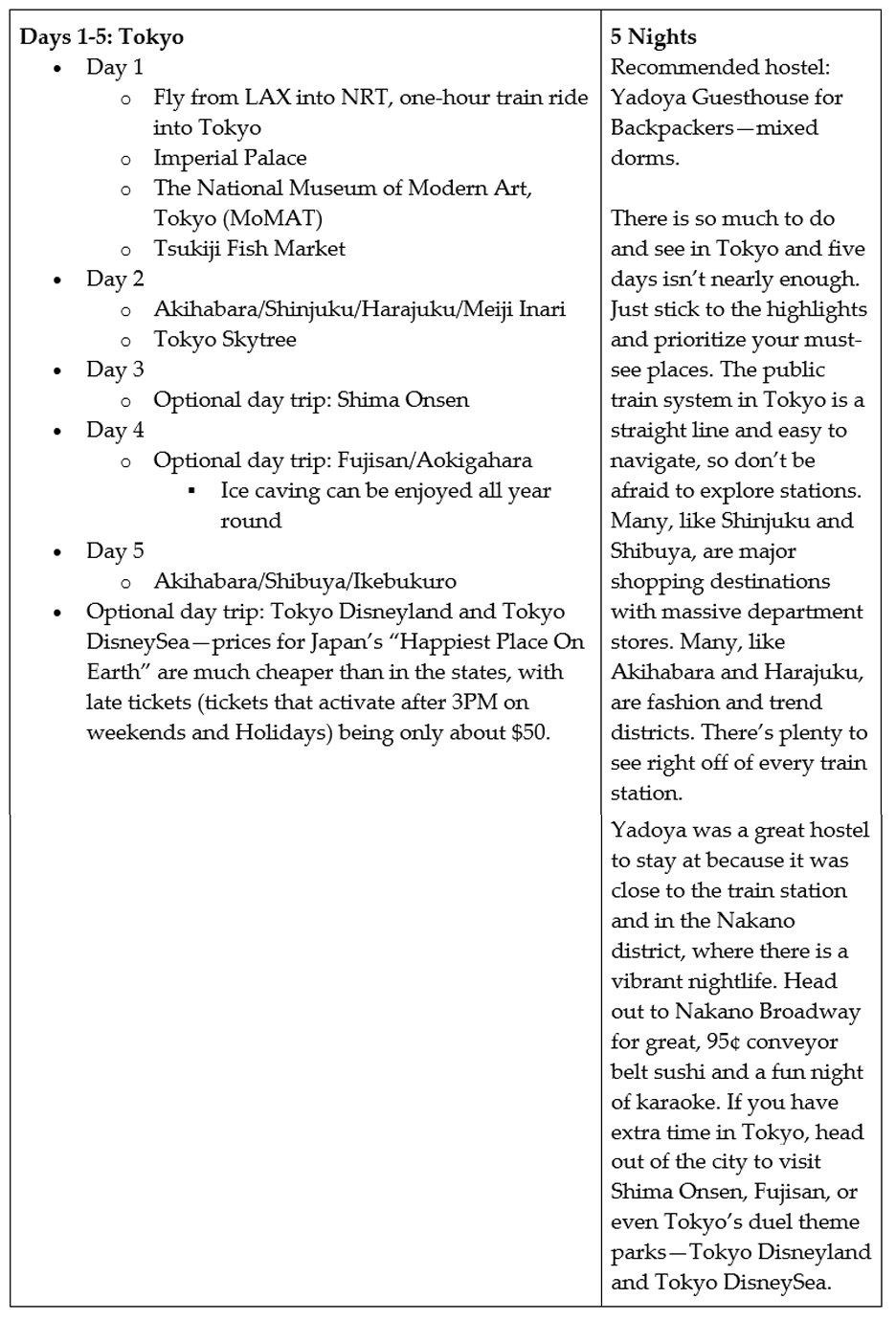
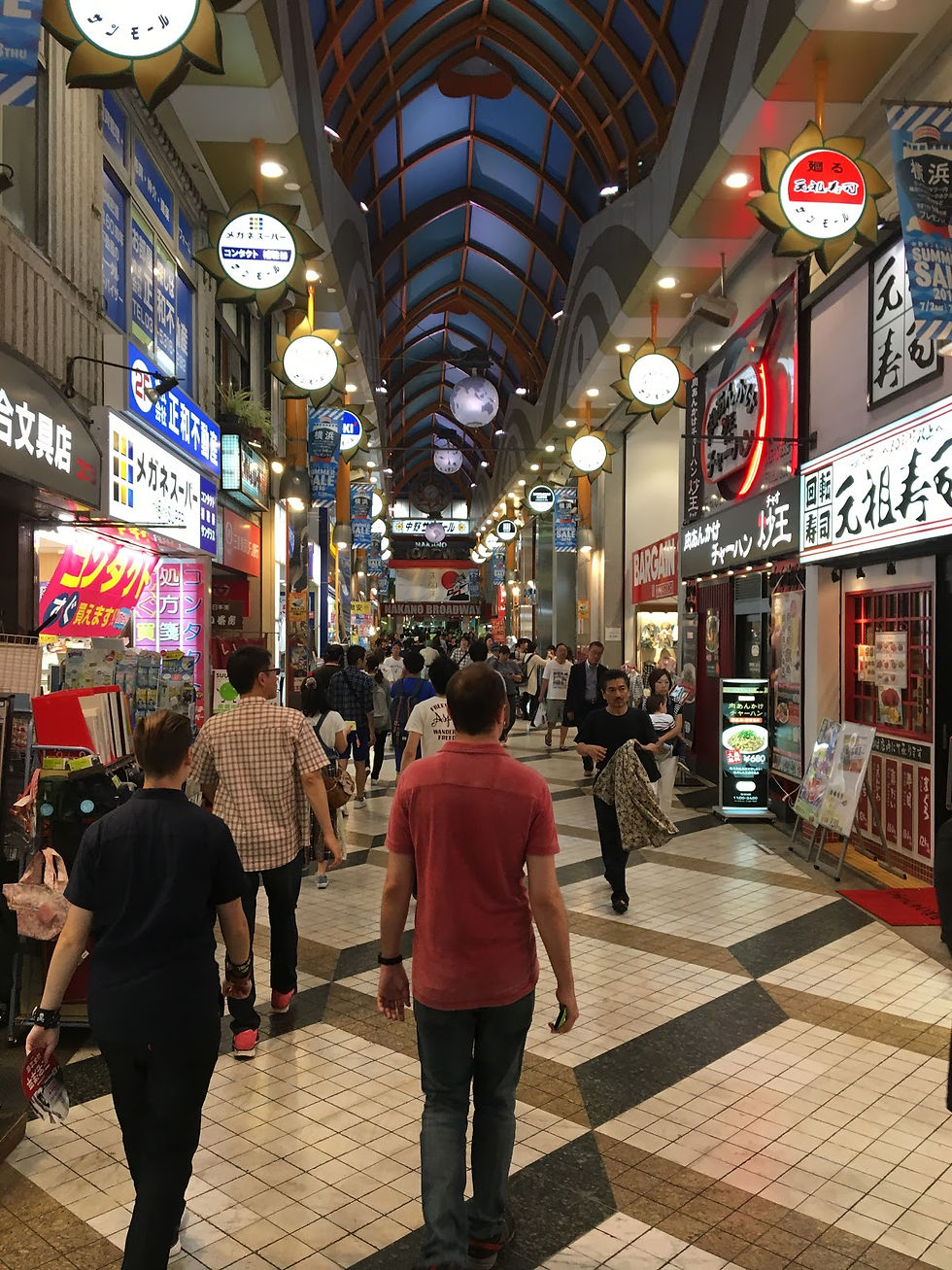
Image By Corey D’Anna
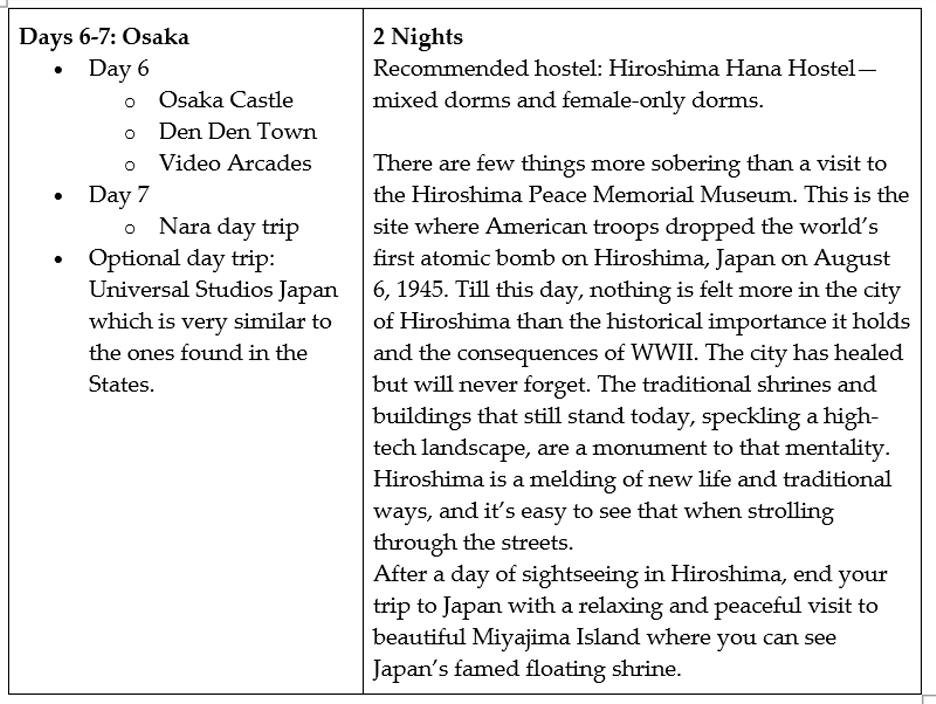

Image By Corey D’Anna
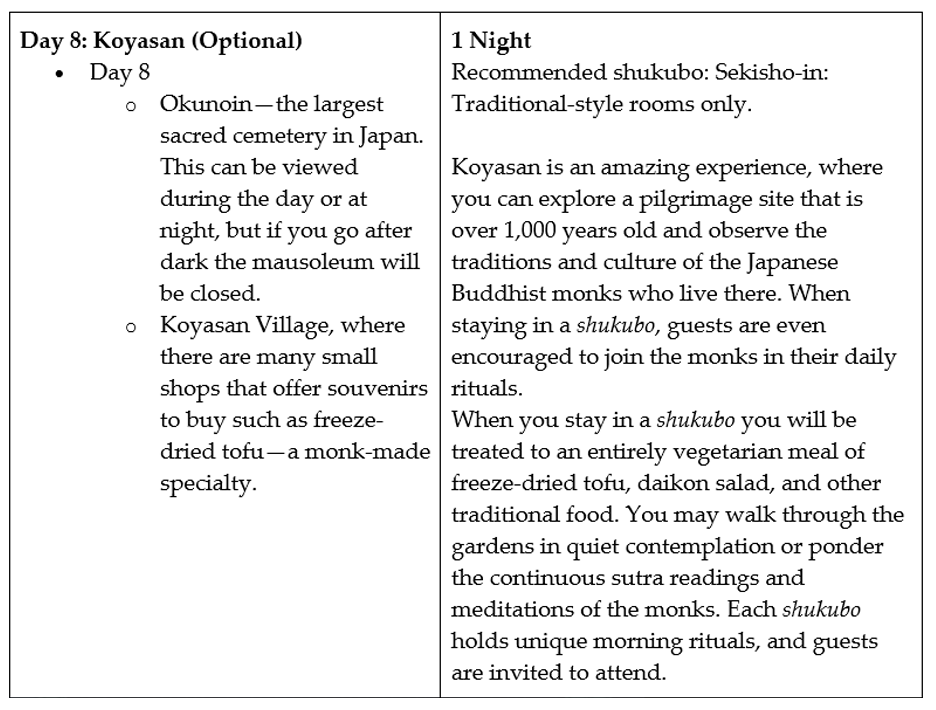

Image By Corey D’Anna
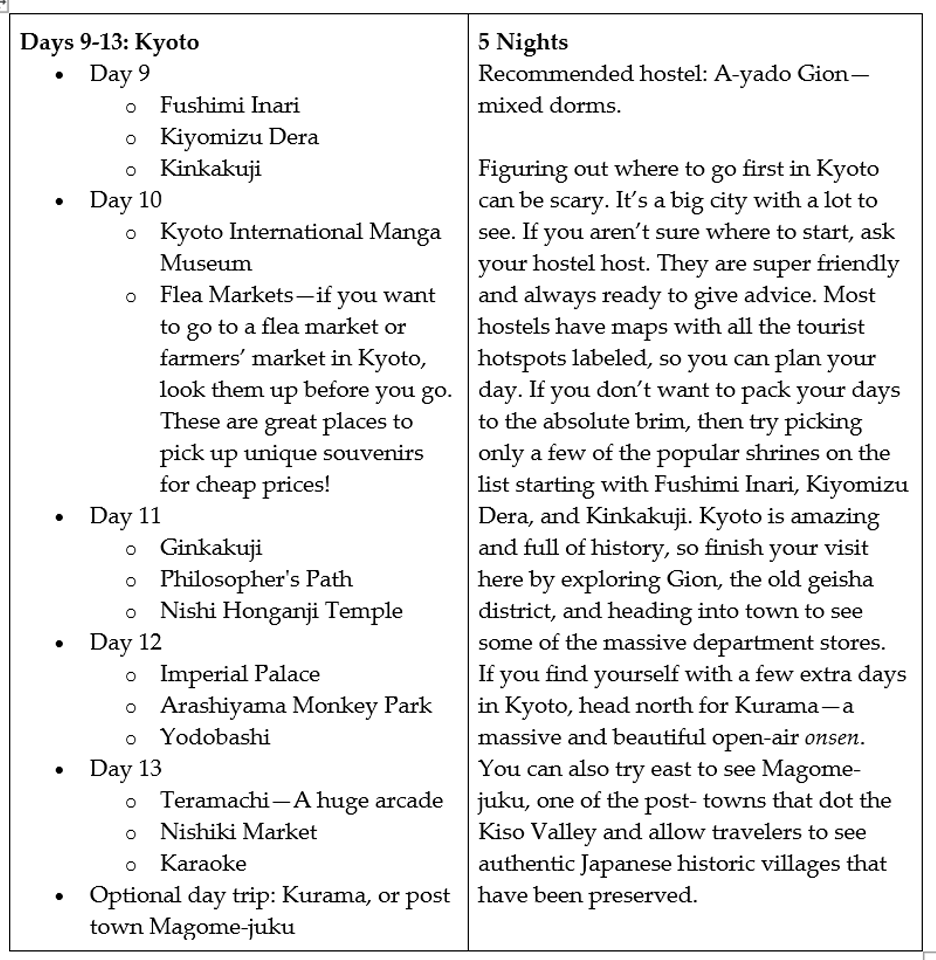
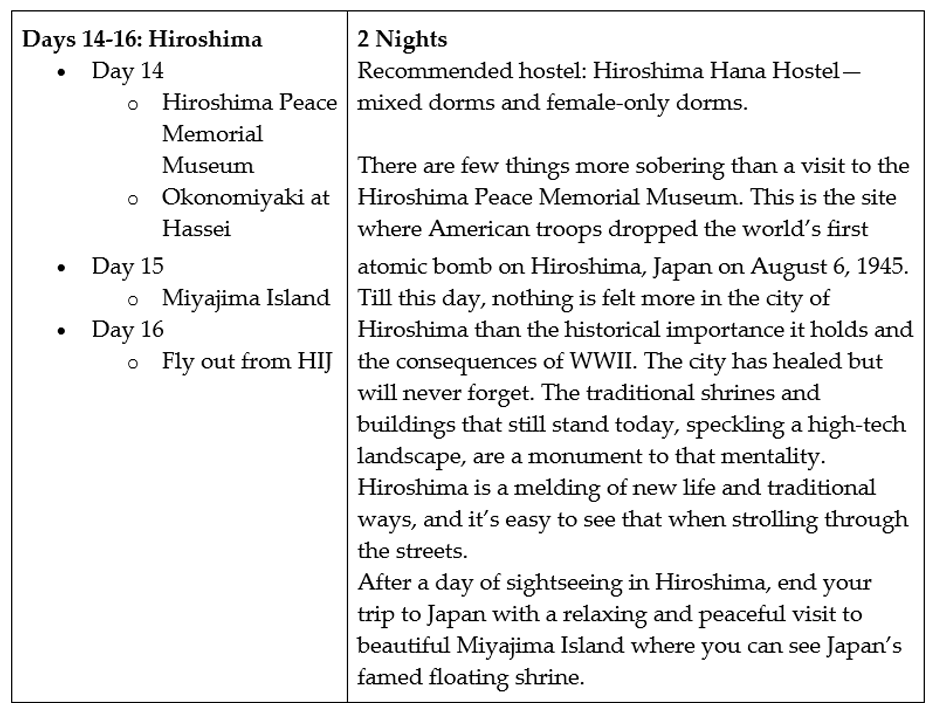
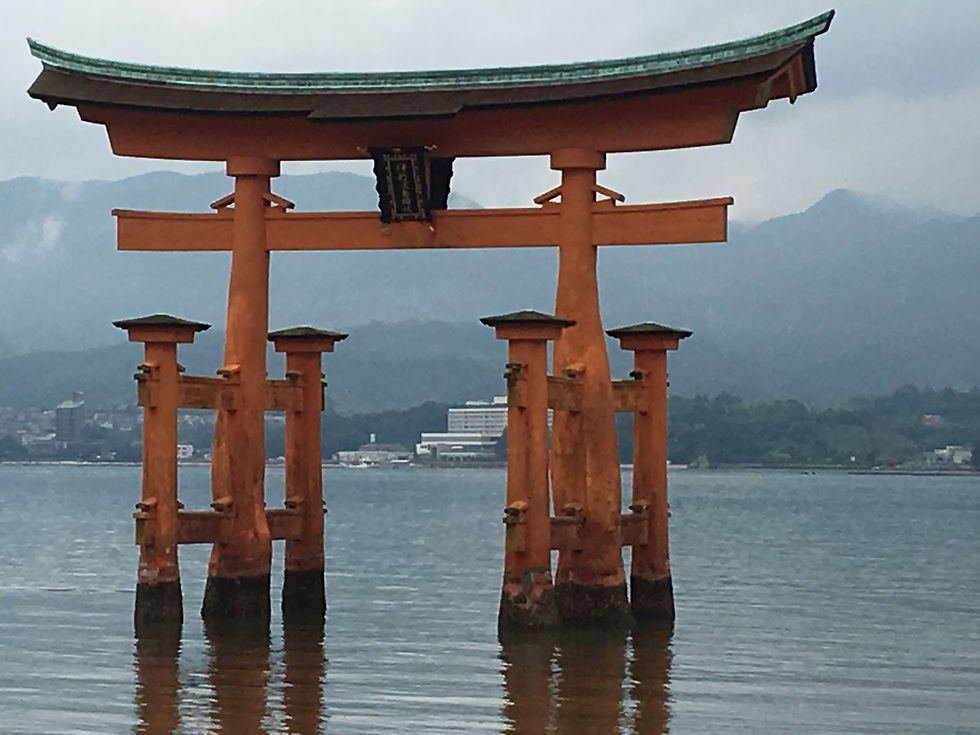
Image By Corey D’Anna


Comments